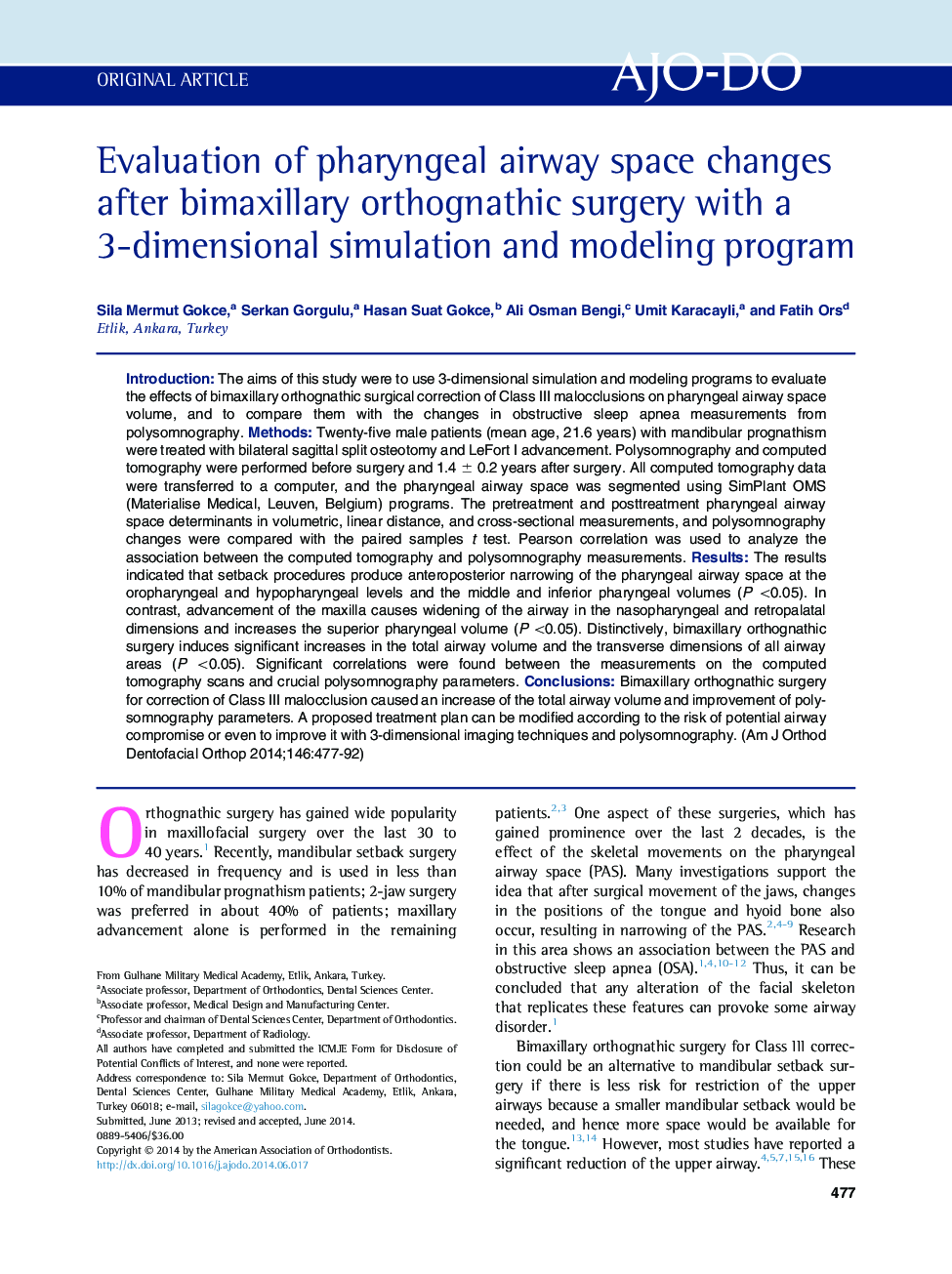| کد مقاله | کد نشریه | سال انتشار | مقاله انگلیسی | نسخه تمام متن |
|---|---|---|---|---|
| 3116310 | 1582697 | 2014 | 16 صفحه PDF | دانلود رایگان |
• Bimaxillary orthognathic surgery to correct Class III malocclusion increased total airway volume.
• Bimaxillary orthognathic surgery to correct Class III malocclusion improved polysomnography parameters.
• Treatment plans could be modified according to the airway compromise.
IntroductionThe aims of this study were to use 3-dimensional simulation and modeling programs to evaluate the effects of bimaxillary orthognathic surgical correction of Class III malocclusions on pharyngeal airway space volume, and to compare them with the changes in obstructive sleep apnea measurements from polysomnography.MethodsTwenty-five male patients (mean age, 21.6 years) with mandibular prognathism were treated with bilateral sagittal split osteotomy and LeFort I advancement. Polysomnography and computed tomography were performed before surgery and 1.4 ± 0.2 years after surgery. All computed tomography data were transferred to a computer, and the pharyngeal airway space was segmented using SimPlant OMS (Materialise Medical, Leuven, Belgium) programs. The pretreatment and posttreatment pharyngeal airway space determinants in volumetric, linear distance, and cross-sectional measurements, and polysomnography changes were compared with the paired samples t test. Pearson correlation was used to analyze the association between the computed tomography and polysomnography measurements.ResultsThe results indicated that setback procedures produce anteroposterior narrowing of the pharyngeal airway space at the oropharyngeal and hypopharyngeal levels and the middle and inferior pharyngeal volumes (P <0.05). In contrast, advancement of the maxilla causes widening of the airway in the nasopharyngeal and retropalatal dimensions and increases the superior pharyngeal volume (P <0.05). Distinctively, bimaxillary orthognathic surgery induces significant increases in the total airway volume and the transverse dimensions of all airway areas (P <0.05). Significant correlations were found between the measurements on the computed tomography scans and crucial polysomnography parameters.ConclusionsBimaxillary orthognathic surgery for correction of Class III malocclusion caused an increase of the total airway volume and improvement of polysomnography parameters. A proposed treatment plan can be modified according to the risk of potential airway compromise or even to improve it with 3-dimensional imaging techniques and polysomnography.
Journal: American Journal of Orthodontics and Dentofacial Orthopedics - Volume 146, Issue 4, October 2014, Pages 477–492
